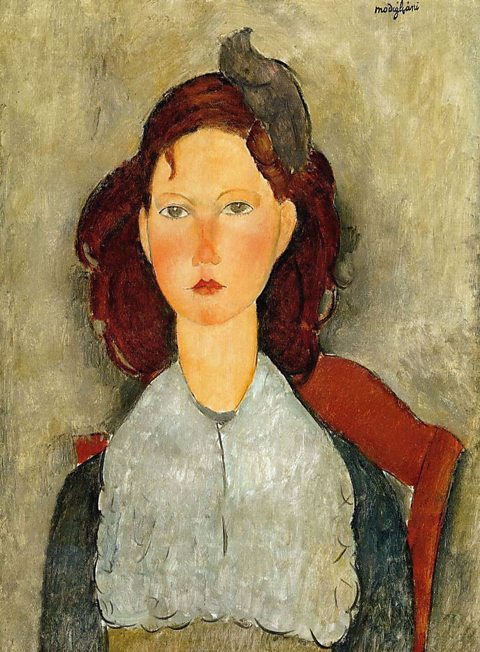Placement
Placing something in a central position will help emphasise it because our eyes tend to be drawn to the middle of a composition.

Seated Girl, Amedeo Modigliani, 1918, oil on canvas, Artepics / Alamy Stock Photo
Seated Girl (Amadeo Modigliani, 1918) is a very simple example showing how placement can help draw our attention to a subject.
The girl is centrally positioned in the frame. The fact that there is very little other detail in the painting helps ensure she stands out against her plain surroundings.

Seated Girl, Amedeo Modigliani, 1918, oil on canvas, Artepics / Alamy Stock Photo

Cuno House, Peter Behren, 1907-11, Ullstein bild / Contributor
Emphasis can play an important functional role in architectural design. In Peter Behren’s Haus Cuno (1907-10) the central position of the main entrance draws our attention to it and makes it easy to find.
The strong vertical lines of the curving window frames above also help lead our eyes down to the doorway.

Cuno House, Peter Behren, 1907-11, Ullstein bild / Contributor